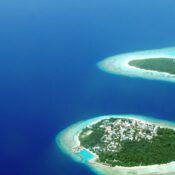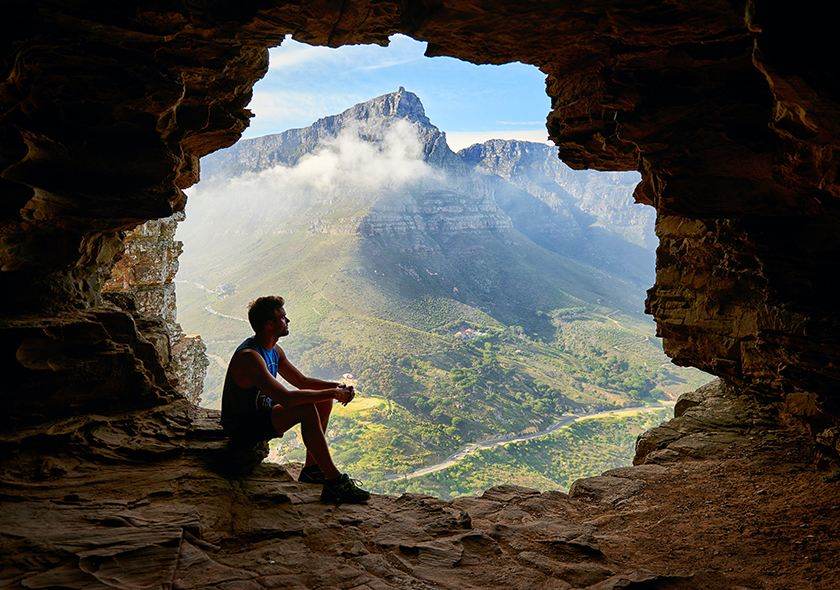
The Story of the seven sisters and Sikkim
The natural beauty of India’s North-Eastern states has long been spoken about and kept hidden by nature. The states have a lot to offer, ranging from Asia’s cleanest hamlet to Assam’s oldest oil refinery, and you know where the fun is? Almost all of the seven sisters are separated by international borders. The Tawang Monastery, India’s biggest monastery, is located in Arunachal Pradesh, while Mawsynram, Meghalaya, has the world’s greatest average rainfall. Do you know about India’s undivided dynasty, which reigned for over 600 years? Well, that’s the essence of it, and you’re invited to learn more about the Seven Sisters and their Only Brother.Â
Story of Seven Sisters and Sikkim and Why Sikkim is known as the brother of seven sisters?Â
The seven sisters make up the North-Eastern state. All seven nations are very reliant on one another, and their biodiversity, faiths, politics, economics, and culture are strikingly similar. Sikkim, however, is not one of the seven sisters. A chicken neck corridor, also known as the Siliguri corridor, separates two seats. The North East of India is connected to the rest of India by a little sliver of land in Bengal’s northern area. Â
If you are planning your trip to Seven Sisters, let’s understand these places!Â
AssamÂ
Assam, the tea state, is nestled between the majestic kingdom of Bhutan to the north, Arunachal Pradesh to the south, and Tripura to the north. Assam is home to the enormous Brahmaputra River, which originates in the Himalayas. With its 1000-kilometer length, the Brahmaputra River is renowned as Assam’s “lifeline,” since its water supplies twenty-two districts, five national parks, and twenty animal sanctuaries. There are almost 900 different types of birds on this island.Â
The region’s lush green meadows, woods, marshes, and rainforests aid in the preservation of the region’s flora and wildlife. Assam is notable for saving several endangered species such as the one-horned Indian rhinoceros, wild water buffalo, pygmy hog, tiger, Asian elephant, and other Asiatic birds from extinction. Assam’s two most famous attractions are the Kaziranga National Park and the Manas National Park, both world heritage sites. Assam is also home to several tribes, including the Garo, Mikir, Khasi, Lushai, and Kachari. In addition, the well-known Bihu state festival is held three times a year in January, April, and December.Â
Must-Visit Places in Assam
-
Witness the extinct one-horned rhinoceros and other animal species in the Kaziranga wildlife reserve.
-
The Majuli is the world’s biggest river island. The transboundary river Brahmaputra surrounds it.
-
Digboi is a historic Assamese city home to India’s first oil refinery.
-
Haflong, also known as the ‘Ant Hill Town’ or the ‘Switzerland of the East,’ is Assam’s only hill station.
-
Sualkuchi, sometimes known as the “Manchester of Assam,” is known for producing the best silk in the nation.
-
Visit Dibrugarh, Assam, to sample some of the world’s highest-quality teas.
How To Reach?Â
-
By Air: Lokpriya Gopinath Bordoloi International Airport, Dibrugarh Airport, Jorhat Airport, Silchar Airport, Lilabari Airport, and Tezpur Airport are all in Assam.
-
By Train: The Guwahati Railway Station is the closest.
ManipurÂ
Manipur was previously considered one of the British Empire’s princely states. Myanmar has a common international boundary with the state. Manipur was shut off from the rest of India throughout the 1930s. Manipur was a British colony that desired to be part of Myanmar. However, Maharaja Budhachandra signed an Instrument of Accession on August 11, 1947, following extensive talks, and Manipur became a permanent part of India.Â
The Meitei tribe, which inhabits the bulk of Manipur, is the state’s largest ethnic group. In addition to them, you may discover the Naga and Kuki-Zo tribes. Manipur has diverse flora. The state’s economy and inhabitants are heavily reliant on the cultivation of a diverse range of plantations. The state of Manipur has had a prominent position in the eyes of visitors since rice is the state’s main food.
Tall teak, pine, oak, and uningthou trees, as well as waterfalls, lakes, and streams, provide vibrancy and richness to the state. Manipur is also known for its tea, coffee, orange, and cardamom plantations. Manipur’s official language is Meiteilon, often known as Manipuri.
Must Visit Places in Manipur
-
The Loktak Lake, located 53 kilometers from Manipur’s capital, Imphal, is the world’s only floating lake.
-
The only floating refuge in the world is Keibul Lamjao National Park. Here you may witness endangered brown-antlered deer (sangai), wild boar, sambar, and hog deer.
-
The Singda Dam is the world’s tallest mud dam, and it’s a great place to go for a climb, a trip, or just a relaxing day in the park.
-
The bronze monument of Subhash Chandra Bose is a highlight of the INA Memorial Complex. Indira Gandhi, India’s previous Prime Minister, inaugurated it in 1969.
-
The Ima Keithel Woman’s Market has been around for about 500 years. Thousands of female vendors offer a wide range of fabrics, jewelry, and food.
How To Reach:Â
-
By Air: After Guwahati Airport, Bir Tikendrajit International Airport is the second-largest and busiest airport in the northeast. Manipur is a 31-minute drive away.
-
By Rail: Imphal is not served by direct train service. You might go to Guwahati or Dimapur before continuing on to Manipur.
Also read about Enjoy the Splendid View of Himalayan Ranges From Gyalshing
MeghalayaÂ
The north-eastern state of Meghalaya shares its border with Bangladesh and its only state, Assam. The state of Meghalaya is noted for being the wettest on the planet. The state’s average rainfall may approach 12,000 mm in certain regions. Cherrapunji holds the world record for the most rain in a month in the Khasi Hills of Meghalaya. The Mawsynram hamlet in Cherrapunji, on the other hand, has the record for the most rainfall in a year. The Sacred Grove woodlands in Meghalaya feature a diverse and uncommon flora. Asiatic elephants, mongooses, red pandas, wild boar, and the Great Indian Hornbill (Meghalaya’s biggest bird) are just a few of the many species.
The bulk of Meghalaya is covered in hills and dense woods, which remain wet for the majority of the year owing to regular rains, which provide a pleasant chill in the air. Meghalaya’s official language is English. Also spoken are Khasi, Garo, Bengali, Nepali, Hindi, and Assamese. Meghalaya is known for its annual Wangala celebration, which takes place in November. Autumnal Festival, Strawberry Festival, and Ranikor Festival are some of the other Meghalaya events.
Shillong, Meghalaya’s capital, is a hill station. Shillong’s structures and monuments are heavily inspired by British architecture. Shillong is known as the ‘Scotland of the East,’ since stunning turquoise lakes and falls surround it.
Must Visit Places in MeghalayaÂ
-
The 3 km long and 2400 feet high Double Decker Living Root Bridge in Cherrapunji is an artificial bridge.
-
In 2013, Meghalaya’s Mawlynnong Village was named Asia’s cleanest village. The Mawlynnong waterfall and the living root bridge are well-known tourist attractions. It is also known as “God’s Own Garden.”
-
The Elephant Falls, a wonderful natural site, are three tiers of the most famous falls in the northeast.
-
The Nohkalikai Falls, located in Meghalaya’s Khasi Hills, is the world’s fourth-tallest waterfall.
-
The government of Meghalaya established the Balpakram National Park in the Garo Hills in 1986 to conserve the state’s flora and wildlife.
How To Reach:Â
-
By Air: Shillong or Umroi Airport, 30 kilometers from Shillong, is the closest airport.
-
By Train: There are no railway stations in Meghalaya. The closest railway station to Meghalaya is Guwahati, which is 104 kilometers from Shillong.Â
MizoramÂ
‘Land of the Mizos’ is how the state of Mizoram is known. It is a landlocked state that has international borders with Myanmar and Bangladesh, as well as Indian states Tripura, Assam, and Manipur. Mizoram was once part of Assam until becoming a union territory in 1972. With a population of about 22,000 people, Mizoram is the country’s least populous state. The state is notable for its many tribes, which include the Dulien, Ralte, Poi, Jahao, Pankhup, Mar, and nine more.Â
The state of Mizoram is well-known for its natural beauty. At 2,210 meters, the Phawngpui Tlang, popularly known as the Blue Mountain, is Mizoram’s highest peak. Although the state is covered in deep woods, it commonly practiced slash and burn agriculture. Cutting and burning plants to produce a swidden or a field is also known as fire fallow agriculture. Despite the fact that the slash and burn technique is illegal in Mizoram, many people still do it. As a result, this has had a significant impact on the landscape. Mizoram’s major festivals are Mim Kut, Pawl Kut, and Chapchar Kut.Â
Must Visit Places in Mizoram:Â
-
The ‘House of Gods’ is known as the Phawngpui Hills. It is Mizoram’s highest mountain summit.
-
The Chhingpuii Memorial was created as a symbol of Chhingpuii and Kaptluanga’s love.
-
The town of Thenzawl is a tiny one. Travel back in time to a more tranquil and charming era on the slopes.
-
The Vantawng Falls, located near Thenzawl, are Mizoram’s tallest and most magnificent waterfalls.
-
The Phawngpui or Blue Mountain National Park is one of Mizoram’s most popular hiking and camping destinations.
-
Mizoram’s caverns, Khuangchera Puk, are famed for being the state’s longest cave. It is 162 meters in length.
How to Reach:Â
-
By Air: The Lengpui Airport in Aizawl, Mizoram, is a domestic airport. Kolkata, Guwahati, and Imphal are all well-connected from the airport.
-
By Train: The most nearby railway station is Agartala, 145 kilometers away.Â
NagalandÂ
In the southern region of Nagaland, it has borders with Assam, Arunachal Pradesh, and Myanmar. Nagaland’s capital is Kohima. Evergreen woods comprise a significant portion of Nagaland. Palm trees, bamboo trees, rattan trees, and mahogany trees, as well as sambar deer, wild oxen, leopards, tigers, elephants, foxes, are just a few of the species that may be found in vast numbers.
For food and jobs, Nagaland is heavily reliant on agriculture. Agriculture employs ninety percent of Nagaland’s people. Only cottage enterprises existed in the state until the early 1970s.
The state’s main crops include rice, maize, legumes, oilseeds, sugarcane, potato, and tobacco.
Nagaland is part of the Indo-Mongoloid ethnic group. Nagaland is noted for its many tribal groups. Chakhesang, Chang, Angami, Ao, Khiamniungan, Rengma, SangtamKuki, Konyak, Sumi, YimchungruLotha, Phom, Pochury, and Zeliang are the principal tribes of Nagaland. For the rich, vivid, and passionate celebrations of its myriad tribal festivals, Nagaland is known as the “country of festivals.” Because agriculture is the people’s primary source of income, all of Nagaland’s holidays center on giving thanks for the crop they have received and asking for blessings for a bountiful harvest in the months ahead.
Must Visit Places in NagalandÂ
-
Dimapur is the primary entry point into the state. It is the state’s biggest city. The magnificent remains of the citadel Kachari Rajbari are a must-see national historic site.
-
Visit the Kohima War Cemetery in the capital city of Kohima. It is a World War II monument honoring service members who battled the Japanese forces. If you visit Kohima in December, make sure to attend the Hornbill Festival, which is a large-scale celebration.
-
The Wokha tribe’s territory is known for its pesticide-free and fertilizer-free oranges and pineapples.
How To Reach:Â
-
By Air: Nagaland is 75 kilometers from Dimapur International Airport. Guwahati and Kolkata are both easily accessible from Dimapur.
-
By Train: Dimapur Railway Station is the closest railway station.
Arunachal PradeshÂ
The international nations of Bhutan, Myanmar, and China and the Indian states of Assam and Nagaland share the area of the ‘dawn-lit mountains.’ Formerly known as the North-East Frontier Agency, Arunachal Pradesh was a component of the state of Assam. It was designated as an Indian union territory in 1972 and then as an Indian state in 1987. The snow-capped majestic Himalayas cover the majority of Arunachal Pradesh. Many rivers, including the Tsangpo (Brahmaputra River), run across the Himalayas and into Indian states. Biodiversity is abundant throughout the state.Â
There are 750 bird species, and 200 animal species can be found here. Tigers, snow leopards, elephants, musk deer, red pandas, wild buffalo, and goral goats are found here. Agriculture employs half of the state’s inhabitants, yet just a small portion of the land is utilized for agriculture. Scheduled tribes make up the bulk of the region’s tribes. The Adi tribe, the state’s biggest, is joined by the Nissi, Apa Tani, Hill Miri, Sherdukpen, Aka, and Monpa tribes. Arunachal Pradesh is one of Asia’s most linguistically varied areas. There are thirty to fifty different languages and dialects spoken there. Itanagar is the state capital of Arunachal Pradesh.Â
Must Visit Places in Arunachal PradeshÂ
-
The Tawang Monastery in Tawang is the country’s oldest and biggest monastic complex.
-
Talley Valley Wildlife Sanctuary is located in the Ziro Valley. Every year in September, Ziro presents the wonderful and engaging Ziro music festival.
-
Bhalukpong is a wildlife and adventure enthusiast’s dream. Visit the Sessa Orchid Sanctuary and Pakhui Wildlife Sanctuary, or go hiking in the Bhalukpong Hills.
-
Pasighat in Arunachal Pradesh’s oldest town. The Brahmaputra River, which originates in Tibet, travels through this area.
How To Reach:Â
-
By Air: The closest airport is Lilabari Airport, which is just 57 kilometers from Itanagar.
-
By Railway: The Harmuti train station is the closest train station connecting Arunachal Pradesh to the rest of India’s main cities.Â
TripuraÂ
Tripura is India’s third smallest state. The Tripuri dynasty governed Tripura for numerous centuries. Under the British Empire, it was part of an autonomous princely state. In 1949, the sovereign state of Tripura was annexed by Independent India. The Shakhan, Jampui Boromura, Atharamurat, and Longtharai hills are among the strong mountain ranges that protect Tripura. The majority of the territory is covered with woods, where bamboo and perennial grasses can be seen easily, leaving just a tiny amount of land used for farming.Â
The agricultural sector dominates Tripura’s economy. Despite being one of India’s most educated states, with an average literacy rate of 87.75 percent, the people of Tripura suffer from poverty and unemployment. Reang, Tripura, Noatia, Debbarma, Jamatia, and fourteen more tribes who moved to Tripura as tea laborers are the primary tribal groupings. The state emanates a combination of tribal and Bengali culture, which is evident throughout the state’s colorful and spectacular festival celebrations.Â
The state’s major festivals are Durga Puja, Kali Puja, Ashokastami, and Dolyatra. In Tripura, Bengali is the most frequently spoken language. The Tripura tribes speak Kokborok, which is a widely spoken language. Other languages spoken here are Mog, Halam, Garo Manipuri, and Manipuri. Agartala is the state capital of Tripura.Â
Must Visit Places in TripuraÂ
-
The Sepahijala Wildlife Refuge is more than simply a wildlife sanctuary; it is also a research and academic center. Boating on the several lakes available allows you to spend your day among the different flora and animals.
-
The Ujjayanta Palace is a royal palace with sophisticated and beautiful architecture, as well as man-made lakes, melodic fountains, and a green area.
-
The Tripura Government Museum was founded in 1970 to display parts of Tripura culture and history via carvings and antiques.
-
Unakoti has less than a million Hindu deity sculptures.
How To Reach:Â
-
By Air: The Agartala airport, also known as the Maharaja Bir Bikram Airport, is located about 5 kilometers from Agartala. Kolkata and Guwahati are both easily accessible.
-
By train, the closest station is Kumarghat, which is 140 kilometers from Tripura.
SikkimÂ
Sikkim is India’s second-smallest state after Goa. Sikkim is home to Kanchenjunga, India’s highest peak and the world’s third tallest mountain. The Namgyal dynasty established and governed Sikkim. Under the British administration, it was a princely state. The monarchy was dissolved in 1975, becoming Sikkim the 22nd state of India. Sikkim is a rapidly expanding Indian state. Sikkim’s economy is mostly reliant on agriculture. Sikkim had the third-lowest but fastest-growing GDP in 2014. It is second only to Guatemala in cardamom production. Sikkim’s crops became 100% organic in 2016. It is the only Indian state to achieve this. By prohibiting plastic bottles and polystyrene items, it has become one of India’s most ecologically aware and responsible states. Sikkim is bilingual. English, Nepali, Sikkimese, and Lepcha are official state languages.Â
Must Visit Places in SikkimÂ
-
The Khangchendzonga National Park is a National Park and Biosphere Reserve in Sikkim, named after the Kanchenjunga mountain. In 2016, it was designated as India’s first mixed historical site by UNESCO.
-
The Rumtek Monastery, perched atop a Gangtok hill, is one of Sikkim’s biggest and most renowned monasteries.
-
Nathu La is a mountain pass in the Himalayan ranges that connects Sikkim with China.
-
The Namgyal Institute of Tibetology has centuries-old Tibetan and Buddhist antiques.
-
The magnificent Tsomgo Lake, also known as Changu Lake, is one of India’s rare high-altitude lakes. It’s on the Gangtok–NathuLa highway.
Also read about 20 Incredible Local Sikkim Food Options To Gorge Upon In 2023
How To Reach:Â
-
By Air: The closest airport to Sikkim is West Bengal’s Bagdogra Airport, which is just 124 kilometers from Gangtok.
-
By Train: The Siliguri railway station, located 114 kilometers from Gangtok, is well linked to India’s main cities.Â
We hope that your trip to the Seven sisters and Sikkim becomes more pleasant. What are you waiting for? Pack your bags and travel to these amazing places full of natural beauty and marvelous flora and fauna.Â





